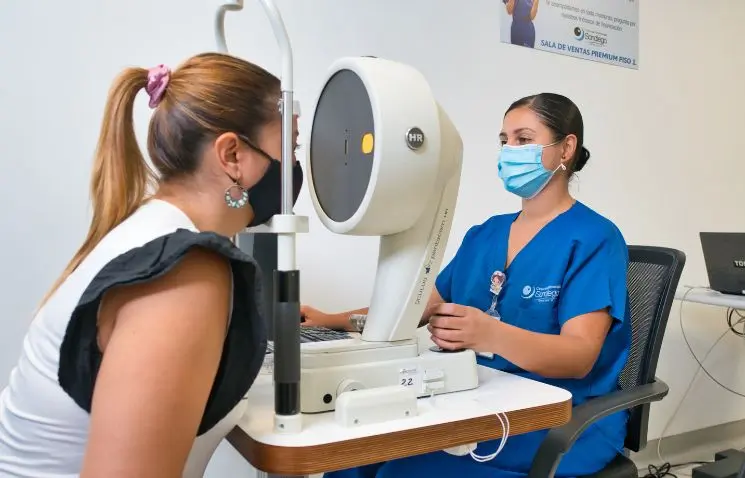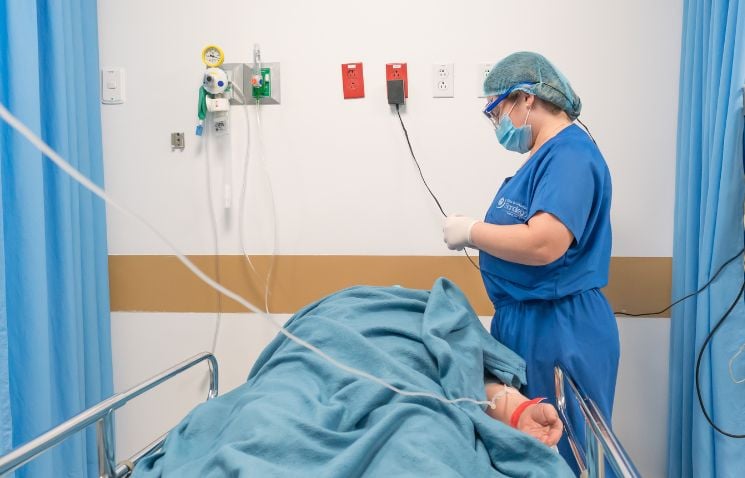Patient safety in ophthalmology is a priority issue
The safety of our patients is an issue that crosses all areas of work, at the Sandiego Ophthalmology Clinic we guarantee that each process is carried out following the established protocols, from patient identification to post-treatment follow-up.
Patient safety is a discipline that arose as the complexity of health care evolved. This system seeks to prevent and reduce risks during the provision of a service, regardless of whether it is an external medical consultation or a specialized surgical intervention. Today, care in any of the health areas is inconceivable that does not include safety standards for the patient and even for their families. According to the World Health Organization (WHO) A cornerstone of the discipline is continuous improvement based on learning from errors and adverse events. “Patient safety is fundamental to providing quality health services. In fact, there is a clear consensus that quality healthcare services around the world must be effective, safe and people-centred. In addition, for the benefits of quality care to be effective, health services must be provided in a timely, equitable, integrated, and efficient manner," the agency states.
Sandiego Ophthalmology Clinic Gets It María Carolina Castillo is the Patient Safety and Audit Leader at Sandiego Ophthalmology Clinic. This nurse, an occupational health specialist, explains that the institution, a benchmark in visual health and ophthalmologists in the city of Medellín, implements the methodologies that define user safety transversally, that is, in each of the areas of the entity. “These processes refer, for example, to the correct and timely identification of patients, the correct administration of the medication, effective and assertive communication with each one of them and their families. The set of these elements must be so well structured in its methodology that the risk of any adverse event in patient care is minimized”.
Good eye health, which includes the care and treatment of all visual diseases, requires a series of instructional packages that define even the smallest detail of the care that patients should receive. According to the expert María Carolina Castillo, one of the most important aspects when talking about safety for the patient in ophthalmology is communication, and it is, at the same time, a differential that the Sandiego Ophthalmology Clinic has. “Information is key and it is something that we focus a lot on, since the first of the objectives is to have open, effective and assertive communication with users and, also, with their relatives or companions. When surgery is going to be performed on a patient, the person can demonstrate details such as the correct identification that is made, with the key data of the patient and with a handle that differentiates by smells, the type of care that is required. For example, if the person takes coagulation medications, if they have cardiovascular risk, or if they are at risk of falling. Each of those details is very important; In the same way, the user can realize the protocol that exists for processes as simple as washing hands or applying an ocular medication. Nothing is left to chance and nothing is taken for granted. Users receive informative documents with everything they need to know about their procedure. “All health institutions are obliged to implement these safety guides for the patient, but we, as visual health specialists, go further, because we are on the accreditation route, which means that we are directed towards continuous improvement of our processes. ”, affirms María Carolina.
Our ophthalmology patient safety policy also contemplates a response to adverse events. The main objective of the ophthalmology patient safety policy is to prevent and reduce the risks associated with the provision of the health service. However, adverse events can occur even when all necessary precautions have been taken. “Our commitment as an institution is that patients have an answer, accompaniment and immediate attention. The care chain includes the patient's relatives or companions and also responds to situations that occur before, during or after the care they receive. For example, if an exam is altered, we take care of speeding up your appointment or prioritizing the intervention you require. If a fall occurs, immediate attention is paid to this fact and it is reported in the patient safety incident reporting system,” says the Patient Safety Leader at the Sandiego Ophthalmology Clinic. The transversal principles of patient safety The patient safety policy, established by the Ministry of Health and Social Protection, defines a series of key principles on which our institution bases the service it provides to its users. Some of the most important are:
*User-centered focus. It means that the important thing is the results obtained in the patient and their safety.
*Culture of security and confidentiality. The actions must take place in an environment of confidentiality and trust between patients, professionals, insurers and the community. *Multicausality. Patient safety is a systemic issue with multiple causes, in which the different areas and different actors of the provider entity must be involved.
* Alliance with the patient and his family. The safety policy must include patients and their families and involve them in its improvement actions.
* Alliance with the health professional. Part of the recognition of the ethical nature of the care provided by the health professional and the complexity of these processes.
The Sandiego Ophthalmology Clinic offers comprehensive care for the visual health of you and your family. The quality of our services is our priority and patient safety in ophthalmology is for our specialists a matter of principle and responsibility.
If you haven't had a checkup for more than a year to rule out eye diseases, or if you have any vision problem, schedule an appointment with us now. Your visual health is our priority!


